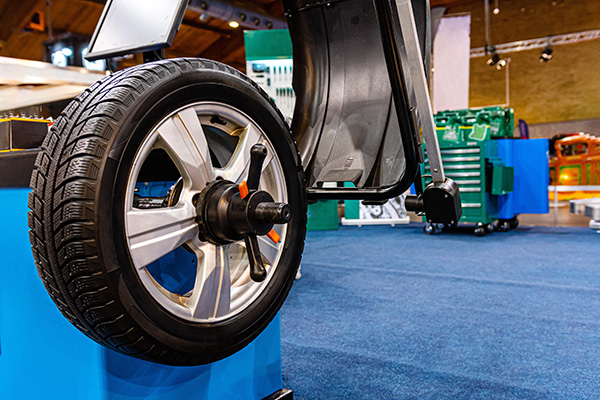
Your vehicle’s tires are more than just rubber that meets the road. They are vital components that directly impact your car’s safety, performance, and efficiency. Yet, tires are often overlooked when it comes to routine vehicle maintenance. Whether you're an everyday commuter or an avid road tripper, understanding the essential tire services your vehicle needs can help you extend tire life, improve driving comfort, and ensure a safer journey.
Regular tire services are critical for maintaining optimal traction, fuel efficiency, and overall handling. Let’s explore the five most essential tire services that every vehicle owner should keep on their maintenance checklist.
1. Tire Rotation
One of the most important tire services is a tire rotation. This process involves moving each tire to a different position on the vehicle, which helps to ensure that all tires wear evenly over time. Tires in certain positions, like the front or rear, tend to wear out faster due to differences in weight distribution, steering, and driving habits.
Without regular rotations, one pair of tires may wear out much faster than the others, leading to uneven performance and forcing you to replace them sooner. Most mechanics recommend rotating your tires every 5,000 to 8,000 miles, or roughly every oil change. Regular rotations can extend the life of your tires and improve overall handling.
Key Benefits:
- Extended tire lifespan
- Improved vehicle performance
- Enhanced fuel efficiency
2. Wheel Alignment
Wheel alignment is another essential service that ensures your vehicle’s wheels are correctly aligned with the road. Misaligned wheels can cause uneven tire wear, pull your car to one side, and make it harder to steer. You may also notice vibrations in the steering wheel when driving.
A misalignment can happen over time due to everyday driving or from hitting potholes, curbs, or other road hazards. Getting your wheel alignment checked regularly helps to avoid unnecessary tire wear and ensures your car tracks straight, offering better handling and safety. Many experts recommend checking alignment once or twice a year or whenever you notice signs of misalignment.
Key Benefits:
- Smoother driving experience
- Prevents uneven tire wear
- Improves vehicle safety and handling
3. Tire Balancing: Eliminating Vibrations
Over time, tires can develop imbalances that cause your car to shake or vibrate at higher speeds. This happens when weight imbalances in the tires and wheels disrupt the even distribution of forces. Tire balancing corrects this by adjusting the weight distribution around the tire and wheel assembly.
Ignoring an unbalanced tire can result in uneven tread wear, increased strain on suspension components, and an uncomfortable ride. During balancing, small weights are placed on the wheel to ensure an even rotation. Tire balancing should be done any time you notice vibrations while driving or after replacing tires.
Key Benefits:
- Reduces vibrations and shaking
- Increases tire longevity
- Protects suspension system from undue wear
4. Tire Pressure Checks
Maintaining the correct tire pressure is perhaps the simplest yet most overlooked tire service. Under-inflated or over-inflated tires can significantly impact fuel efficiency, handling, and tire longevity. Tires that are not properly inflated can also be more susceptible to blowouts, increasing the risk of accidents.
Tire pressure can fluctuate due to temperature changes and driving conditions, so it’s essential to check your tire pressure regularly. Many modern vehicles come equipped with a tire pressure monitoring system (TPMS), but it’s still a good habit to manually check the pressure monthly. Always refer to your vehicle’s manual for the recommended tire pressure levels.
Key Benefits:
- Improves fuel economy
- Reduces the risk of tire blowouts
- Extends the life of your tires
5. Tire Tread Inspection
Your tire tread plays a critical role in traction, particularly in wet or slippery conditions. Over time, the tread wears down, reducing your car’s grip on the road and increasing the risk of hydroplaning or losing control. Regular tire tread inspections can help you determine when it’s time to replace your tires.
A common way to check your tire tread is the "penny test." Insert a penny into the tread with Lincoln’s head facing down. If you can see the top of Lincoln’s head, it’s time for new tires. Additionally, any visible signs of damage, like bulges, cracks, or punctures, should be addressed immediately.
Key Benefits:
- Ensures proper traction and safety
- Prevents accidents in wet or slick conditions
- Helps you know when it’s time for a replacement
Unsure about your tire condition? Let the pros at A Plus Automotive take a look. Whether it’s a simple pressure check or a full tire balancing service, we’ve got you covered. Stop by or call now to book your tire maintenance session!